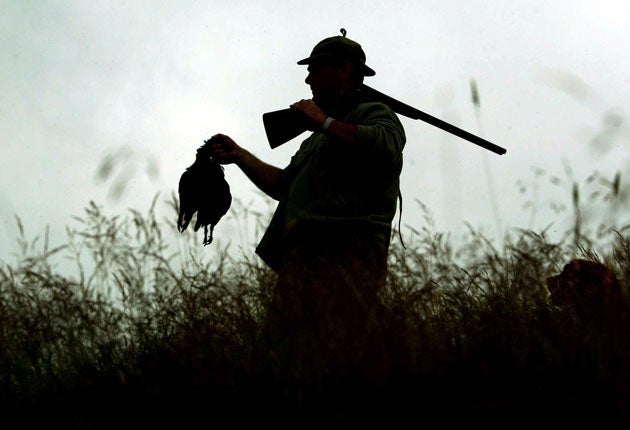Frozen food tycoon Alistair Erskine appeals to Supreme Court after leasing Castle Grant grouse moor only to find ‘small numbers of grouse’

The 11,000 acres of heather clad grouse moor rising above the banks of the river Spey had long formed part of one of Scotland's ancient sporting estates and the backyard of an aristocratic family which can trace its noble lineage back to the time of Bonnie Prince Charlie.
For Alastair Erskine, a keen shot who had made his fortune selling frozen seafood and smoked salmon, they also offered the dream of bumper bags of the sought-after game bird whose season's opening is celebrated on the Glorious Twelfth.
But despite ploughing £530,000 of his own money in a bid to improve the moor, five years of hard shooting yielded just 180 brace - a far cry from the 2,000 birds he had anticipated taking each year.
Despite having previously lost in two lower courts, Mr Erskine today took his £1m damages claim against the trustees of the estate - including the Right Honourable Ian Derek Francis Ogilvie-Grant, 13th Earl of Seafield - to the Supreme Court.
The court was told that the businessman - believing it to be one of the most productive grouse moors in Scotland at the time - signed a 15-year deal in 2007 with Castle Grant estate near Grantown-on-Spey. It required that he invest in the land to increase the number of birds which he could then shoot before returning it back to its owners.
Although it had yielded considerable bags in the 1970s like many others in Scotland the number of grouse had gone into steep decline so that by the 1990s a recovery programme was in place.
Grouse numbers can be severely affected by the weather and populations have been hit by the rapid growth in sheep and deer as well as changing habitats.
Mr Erskine, who is bringing the case in the name of Cramaso, the partnership he established with his wife for the project, had sought a reduction of the lease and damages claiming that he had been misled over the productivity of the shoot.
"It claimed that it was induced to enter into the lease as a result of misrepresentation as to the number of grouse on the moor made by an employee of the trustees, the chief executive of the trust, to Mr Erskine prior to the establishment of the Appellant (Cramaso)," according to a summary of the case.
However a judge in the Court of Session in Edinburgh found that whilst there had been a material misrepresentation and a failure in duty of care this was to Mr Erskine and not Cramaso. The decision was upheld by three appeal judges.
In a statement the trustees of the Reidhaven Estate said: "The previous judgements were in our favour and, although this appeal to the Supreme Court has been made, it would be inappropriate to comment until a decision has been reached."
The Reidhaven Estate along with the Seafield and Ogilvie-Grant Estates forms part of the 54,000 Strathspey Estate within the Cairngorm National Park. Castle Grant, which was sold in 1983, was the family seat. It was occupied by Jacobite forces in 1747 when the then laird was blocking the path of Bonnie Prince Charlie's army.
Subscribe to Independent Premium to bookmark this article
Want to bookmark your favourite articles and stories to read or reference later? Start your Independent Premium subscription today.

Join our commenting forum
Join thought-provoking conversations, follow other Independent readers and see their replies